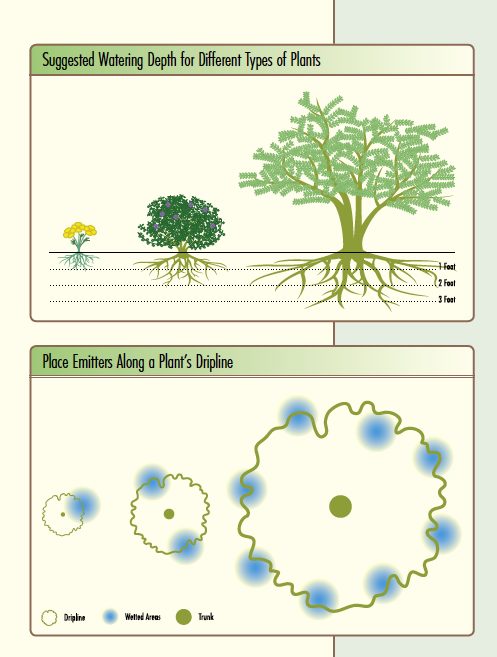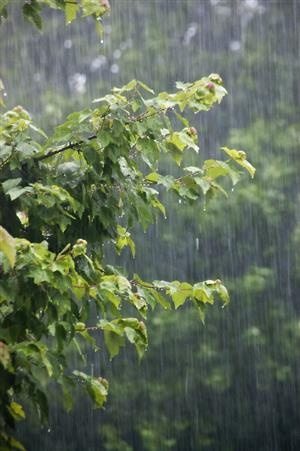We frequently receive requests asking for names of good landscapers. Because we must remain impartial, we aren’t able to make any recommendations. Except for one….Mother Nature. Use her as a guide and you’ll hardly go wrong.

For instance, in nature, rain flows over the canopy of a tree and cascades to the ground from the edges of the branches. We call it the drip line. This is where 90 percent of a tree or plant’s water-absorbing roots are located. Now think about where your emitters are placed in your landscape. Chances are they are near the trunk or stem and have been there for years.
It’s important to move emitters to the drip line as plants grow. That way the water source is in the region where the ‘feeder’ roots are. You may need to add emitters as plants become larger as well. Moving emitters away from the trunk will also make your tree or plant more stable in the ground helping to prevent leaning or toppling.
Mother Nature didn’t intend shrubs to be shaped like soup cans, or trees pruned into feather dusters. Doing so can shorten their lives, contribute to wind damage, and make them vulnerable to pests and diseases. Plus, it increases their water needs.
November is a great time to heed Mother Nature’s advice. If you need help with your landscape, contact your local Water Conservation Office.
Cathy Rymer is a water conservation coordinator with the City of Chandler, AZ, one of fifteen Water – Use It Wisely partners to offer water-saving advice and programs.


